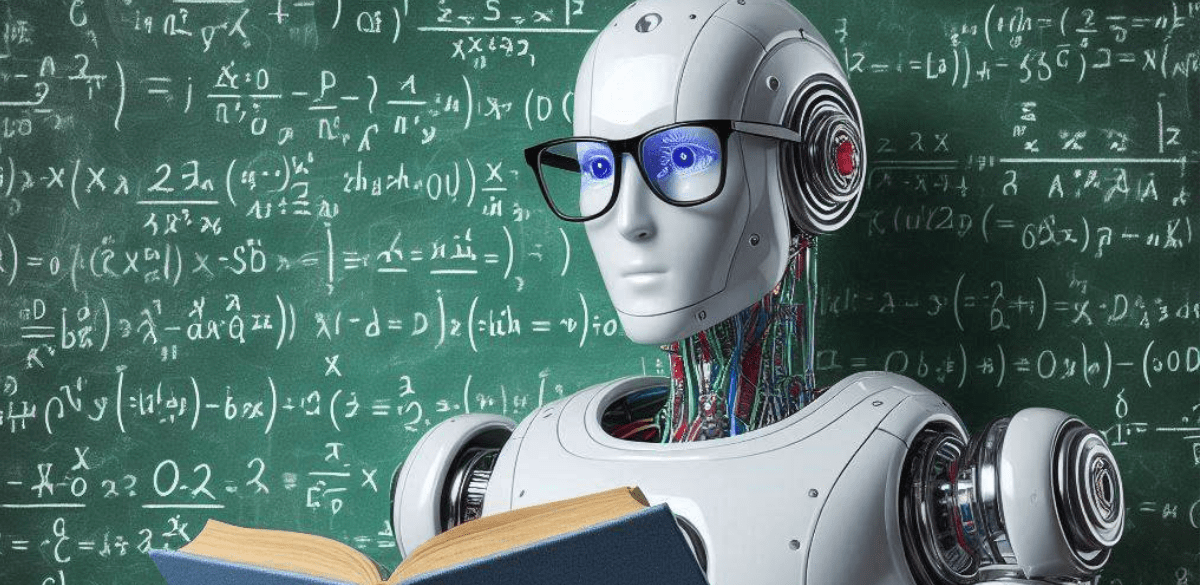So, you’ve probably heard the buzz about machine learning (ML) everywhere, right? From Netflix recommendations to self-driving cars, machine learning is revolutionizing how we interact with technology. But what exactly is it, and why should you care?
Definition and Importance
In simple terms, machine learning is a type of artificial intelligence (AI) that allows software applications to become more accurate at predicting outcomes without being explicitly programmed to do so. Think of it as teaching computers to learn from experience, much like humans do.
Historical Background
The concept of machine learning isn’t new. It dates back to the 1950s when Arthur Samuel, a pioneer in AI, coined the term while working on early checkers-playing programs. Fast forward to today, and we have incredibly advanced systems capable of complex tasks like image recognition and natural language processing.
What Is Cloud Computing? Learn In Simple Way.
How Machine Learning Works
To understand how machine learning works, imagine teaching a child to recognize animals. You’d show them pictures of different animals and tell them what each one is. Over time, they’d learn to identify them on their own. Machine learning operates on a similar principle.
Algorithms and Models
At the heart of machine learning are algorithms and models. Algorithms are step-by-step procedures or formulas for solving problems. In ML, they process data and find patterns. Models are the outputs of these algorithms, representing the patterns found in the data.
Training and Testing Data
Just like a child needs examples to learn, machine learning models need data. This data is divided into two sets: training data (to teach the model) and testing data (to evaluate its accuracy). The better the data, the more accurate the model.
Types of Machine Learnings.

Machine learning isn’t a one-size-fits-all approach. There are different types designed for specific tasks and goals.
Supervised Learning
This is the most common type of machine learning. Here, the model is trained on a labeled dataset, meaning each training example is paired with an output label. Think of it as learning with a teacher. For example, predicting house prices based on features like size and location.
Unsupervised Learning
In unsupervised learning, the model is given data without explicit instructions on what to do with it. It’s like giving a student a puzzle without showing them the picture on the box. The model tries to find hidden patterns or structures in the data, like grouping customers based on purchasing behavior.
Reinforcement Learning
Reinforcement learning is all about learning through trial and error. The model makes decisions, receives feedback, and adjusts its approach to maximize rewards over time. It’s similar to how you might train a dog with treats. This type is often used in robotics and gaming.
Semi-supervised Learning
As the name suggests, this is a mix of supervised and unsupervised learning. The model is trained on a small amount of labeled data and a large amount of unlabeled data. It’s useful when labeling data is expensive or time-consuming.
Key Concepts in Machine Learning

Before diving deeper, let’s get familiar with some fundamental concepts.
Features and Labels
Features are the input variables used to make predictions, while labels are the output variables. In a model predicting house prices, features could be the number of bedrooms, while the label would be the price.
Overfitting and Underfitting
Overfitting occurs when a model learns the training data too well, capturing noise along with the underlying pattern. It performs well on training data but poorly on new data. Underfitting is the opposite—when a model is too simple to capture the underlying pattern in the data.
Bias-Variance Tradeoff
This is a crucial concept in machine learning. Bias refers to errors due to overly simplistic models, while variance refers to errors due to models being too complex. The goal is to find a balance, minimizing both to achieve good performance on new data.
Popular Machine Learnings Algorithms
There are numerous algorithms in machine learning, each suited for different types of tasks. Here are a few popular ones:
Linear Regression
This is one of the simplest algorithms, used for predicting a continuous output. It models the relationship between input features and the output label by fitting a linear equation.
Decision Trees
Decision trees are like flowcharts, where each internal node represents a test on a feature, each branch represents an outcome, and each leaf node represents a class label. They are easy to interpret and useful for both classification and regression tasks.
Neural Networks
Inspired by the human brain, neural networks consist of layers of nodes (neurons). They are particularly powerful for tasks like image and speech recognition. Deep learning, a subset of ML, involves neural networks with many layers.
Support Vector Machines
Support Vector Machines (SVMs) are used for classification tasks. They work by finding the hyperplane that best separates different classes in the feature space. They are effective in high-dimensional spaces.
How Algorithm Work, What Magic Happened Inside?
Applications of Machine Learning

Machine learning is everywhere, transforming various industries.
Healthcare
From diagnosing diseases to personalizing treatment plans, machine learning is making healthcare more efficient and accurate. For instance, ML algorithms can analyze medical images to detect tumors at an early stage.
Finance
In finance, machine learning helps in fraud detection, algorithmic trading, and risk management. Banks use ML models to assess creditworthiness and detect suspicious transactions.
Marketing
Ever wondered how online ads seem to know exactly what you’re interested in? That’s machine learning at work, analyzing your browsing habits to serve personalized ads. It’s also used in customer segmentation and sentiment analysis.
Autonomous Vehicles
Self-driving cars rely heavily on machine learning. They use ML algorithms to process data from sensors and cameras, make decisions in real-time, and navigate safely.
Natural Language Processing
Natural Language Processing (NLP) is a field of AI focused on the interaction between computers and humans through natural language. Applications include chatbots, language translation, and sentiment analysis.
How AI Works? What Magic Happened Inside?
Challenges in Machine Learnings
Despite its advancements, machine learning faces several challenges.
Data Quality and Quantity
The quality and quantity of data are critical for training effective models. Poor quality data or insufficient data can lead to inaccurate predictions.
Ethical Considerations
Machine learning can unintentionally perpetuate biases present in the training data, leading to unfair outcomes. Ensuring ethical use of ML is a growing concern.
Model Interpretability
Understanding how complex models make decisions can be difficult. This “black box” problem hinders trust and adoption in critical applications like healthcare.
Computational Resources
Training sophisticated models, especially deep learning models, requires significant computational power and resources, which can be costly.
The Future of Machine Learning

The future of machine learning is bright and full of potential.
Trends and Predictions
We’re likely to see more advancements in areas like automated machine learning (AutoML), which aims to make ML more accessible. Integration with IoT (Internet of Things) and edge computing will also become more prevalent.
Impact on Various Industries
Machine learning will continue to transform industries by enhancing efficiency, enabling new capabilities, and driving innovation. From smarter cities to personalized education, the possibilities are endless.
Getting Started with Machine Learning
Interested in diving into the world of machine learning? Here’s how to get started.
Prerequisites and Learning Resources
A good grasp of mathematics (especially statistics), programming skills (Python is popular in ML), and some basic knowledge of data science concepts are essential. There are plenty of online courses, tutorials, and books to help you get started.
Building Your First Model
Start small. Choose a simple project, like predicting house prices or classifying emails as spam or not spam. Use open-source libraries like scikit-learn or TensorFlow to build and train your model. The key is to practice and keep experimenting.
Conclusion
Machine learning is a fascinating and rapidly evolving field with the potential to change the world as we know it. Whether you’re a tech enthusiast, a professional looking to upskill, or simply curious about the latest advancements, there’s no better time to dive into machine learning. From its historical roots to its future potential, ML is a field that promises both exciting challenges and incredible opportunities.
FAQs
What is the difference between AI and machine learning?
Artificial Intelligence (AI) is a broad concept referring to machines that can perform tasks that typically require human intelligence. Machine learning (ML) is a subset of AI that involves training algorithms to learn from data and make predictions. In short, all machine learning is AI, but not all AI is machine learning.
How is machine learning used in everyday life?
Machine learning is embedded in many aspects of our daily lives. It’s used in recommendation systems (like Netflix and Amazon), virtual assistants (like Siri and Alexa), spam filters in email, personalized advertising, fraud detection in banking, and much more. Whenever you see technology making intelligent decisions, machine learning is likely at play.
What skills are needed to become a machine learning engineer?
To become a machine learning engineer, you’ll need strong programming skills (particularly in Python), a good understanding of mathematics and statistics, knowledge of algorithms and data structures, and familiarity with machine learning frameworks like TensorFlow or Py Torch. Soft skills like problem-solving, critical thinking, and the ability to work with data are also essential.
What are some common misconceptions about machine learning?
One common misconception is that machine learning is magic—it’s not. It requires a lot of data, computation, and fine-tuning. Another misconception is that ML models can think or understand context like humans—they don’t; they only find patterns in data. Lastly, many believe that machine learning can solve any problem, but its effectiveness heavily depends on the quality and relevance of the data.
How can businesses benefit from machine learning?
Businesses can leverage machine learning in numerous ways. It can help in predictive analytics to foresee market trends, personalize customer experiences, automate routine tasks, optimize supply chains, and improve decision-making processes. By analyzing vast amounts of data, machine learning can uncover insights that drive efficiency and innovation
